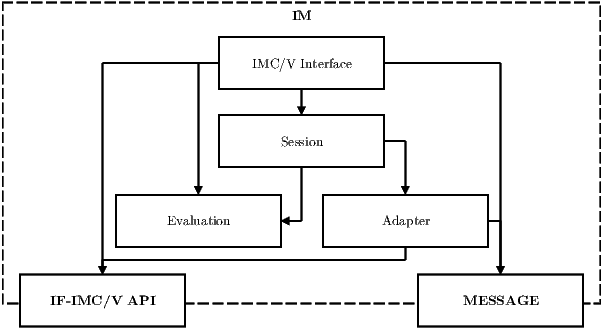
The module IM contains the functions that are necessary to measure and validate values that describe the integrity state of a system that needs attestation. The module can be used to implement either an IMC or an IMV. The modules structure is depicted in Fig. 5.
An IMC or IMV is a self-contained unit a TNCC or TNCS can interact with using the IMC/V Interface depicted. The IMC/V Interface implements the methods defined by the TNC-WG, which must or at least may be supported by an IMC or IMV (cf. section 3.1 and section 3.2). As soon as an IMC or IMV has been informed of a new connection for an integrity attestation by a TNCC or TNCS through the IMC/V Interface, a Session is created for this connection. Every message from the new connection destined to the particular IMC or IMV is decode by the IMC/V Interface with the help of the module MESSAGE and passed to this Session afterwards. The session passes the received messages to the Evaluation for further processing, which means the measurement of the system in case of an IMC or the validation of measurement values and the request of further measurement values, if necessary, in case of an IMV. Besides, the Evaluation processes the result of the integrity attestation. With regard to the task that is executed, the Evaluation may also create messages, which will be send back via the Session using the connection. So called Adapters, which adapt the methods that are defined by the TNC-WG (cf. section 3.1 and section 3.2) for the transmission of messages over a connection are used for this purpose. The Adapters use the module MESSAGE to encode the messages for transmission.